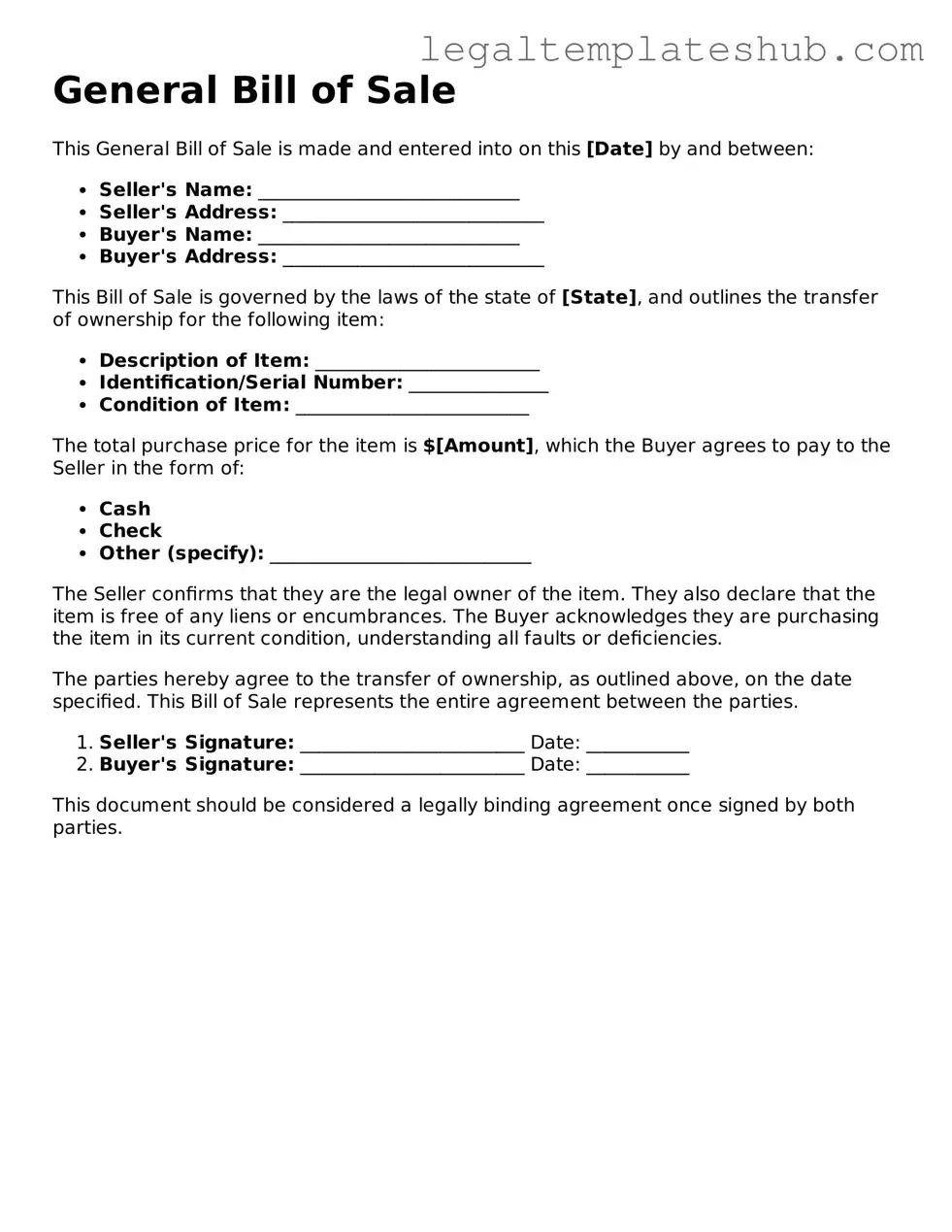Instructions on Filling in General Bill of Sale
After gathering the necessary information, you're ready to fill out the General Bill of Sale form. This document is essential for transferring ownership of personal property, and it’s important to ensure that all details are accurate. Follow the steps below to complete the form effectively.
- Obtain the form: Start by downloading or printing the General Bill of Sale form from a reliable source.
- Enter the date: Write the date when the sale is taking place at the top of the form.
- Seller’s information: Fill in the full name and address of the seller. Make sure to include the city, state, and ZIP code.
- Buyer’s information: Next, provide the full name and address of the buyer, including the city, state, and ZIP code.
- Item description: Clearly describe the item being sold. Include details like make, model, year, and any identifying numbers (like VIN for vehicles).
- Sale price: Indicate the agreed-upon sale price for the item. Ensure this amount is accurate and clear.
- Payment method: Specify how the payment will be made (cash, check, etc.). This helps clarify the transaction.
- Signatures: Both the seller and buyer should sign and date the form. This step is crucial for validating the agreement.
- Witness or notarization: Depending on your state’s requirements, you may need a witness signature or notarization for added security.
Once the form is filled out and signed, keep copies for both parties. This ensures that everyone has a record of the transaction, which can be important for future reference.
